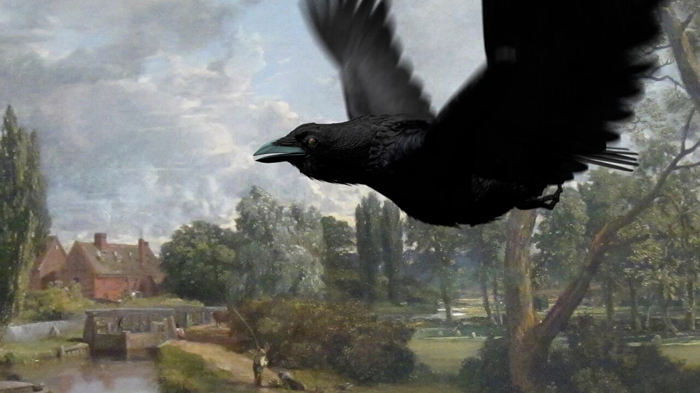Press Release
In the exhibition The Wood for the Trees, four artists examine the relationship between humans and nature in different ways through their work.

International Archives 1st half of 2024
The Wood for the Trees
Kröller-Müller Museum, Otterlo (The Netherlands)
23.03 - 15.09.2024
23.03 -

Andy Holden
In Natural Selection, British artist Andy Holden (Bedford, 1982) gives a leading role to birds, to their powers of prediction, their creativity and their impending extinction. The work also deals with guilt and taking responsibility. Pyramid Piece is a work in which Holden reconciles himself with his sense of guilt: he once took a small stone from a pyramid in Egypt.
A Social History of Egg Collecting is also about curbing the passion for collection. A talking crow tells us the history of egg collecting in Britain. The passion for collecting among egg experts sometimes leads to the disappearance of bird species.
In the video installation A Natural History of Nest Building, father Peter Holden, a celebrated ornithologist in Britain, and son Andy talk about different types of birds’nests, nest sites and materials. While one discusses the structures as a scientist, the artist instead sees creativity and beauty.
Holden uses electronically visualised sound waves (oscillograms) of bird song for his Silent Spring. In the sculpture garden, he has placed three bronze sculptures depicting these sound waves: Auguries. The title refers to the Roman practice of predicting the future by observing birds.
Eija-
In the work of Eija-
Julian Charrière
For his series Limen—threshold”or “ransition”French artist Julian Charrière (Morges, 1987) takes digital aerial photographs of the disorienting landscape of North Greenland. There are no landmarks such as houses, trees or animals. The weather changes constantly and any boundary between the sky and earth is often imperceptible. The landscape there is in constant transition.
To print his photographs, Charrière uses a printmaking technique developed in the nineteenth century: photogravure, in which photographs are printed on paper using etched plates.
Charrière composes the colours for his photogravures by grinding materials from the North Greenlandic landscape into pigments: stones, moraine clay, grit, soot and bacteria. These are then digitally scanned to create colour schemes. With these “rue colours of the landscape” Charrière creates his photogravures of an ever more rapidly disappearing landscape.
Hans Op de Beeck
The Settlement (Indoor) by Belgian artist Hans Op de Beeck (Turnhout, 1969) is reminiscent of a deserted film set where a scene could take place at any moment. Amid the black, gently rippling water stands a grey-
Andy Holden, The Opposite of Time (A Social History of Egg Collecting) (still), 2017.

Exhibitions 23 March -

© ArtCatalyse International / Marika Prévosto 2024 All Rights Reserved